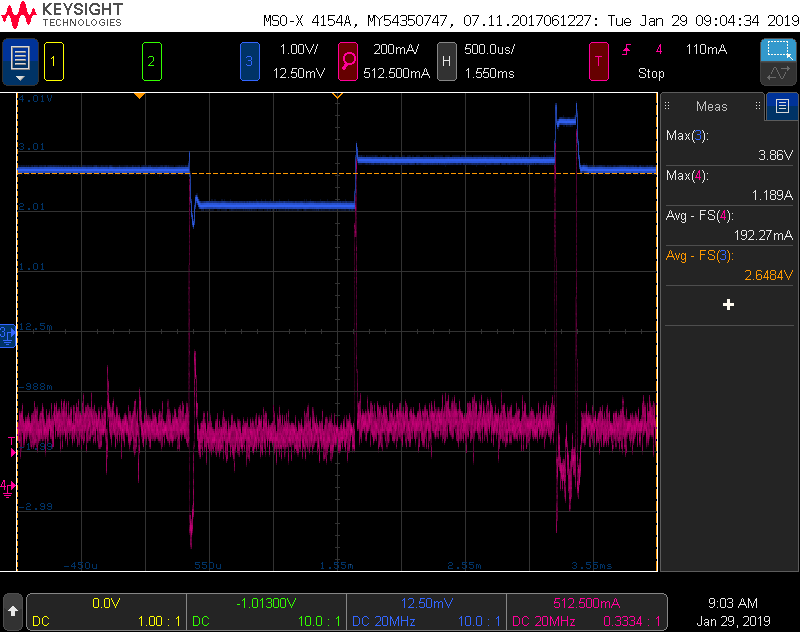Hello,
The maximum LED current we are aiming for is only ~300mA. However, transitioning between Red, Green, and Blue, there are huge input current spikes (1.5A) since the buck-boost is trying to fill the output capacitors as fast as possible. I am worried these current spikes will result in voltage dips throughout the entire VSYS rail that will cause buzzing caps.
Since the target current is much lower than the chip's max current (750mA), is there any way to reduce the input current spikes?
Could we reduce the VLED capacitance since our max loading current is lower than normal?
Are there any internal registers that would slow down the VLED voltage ramps?
Thanks,
G





